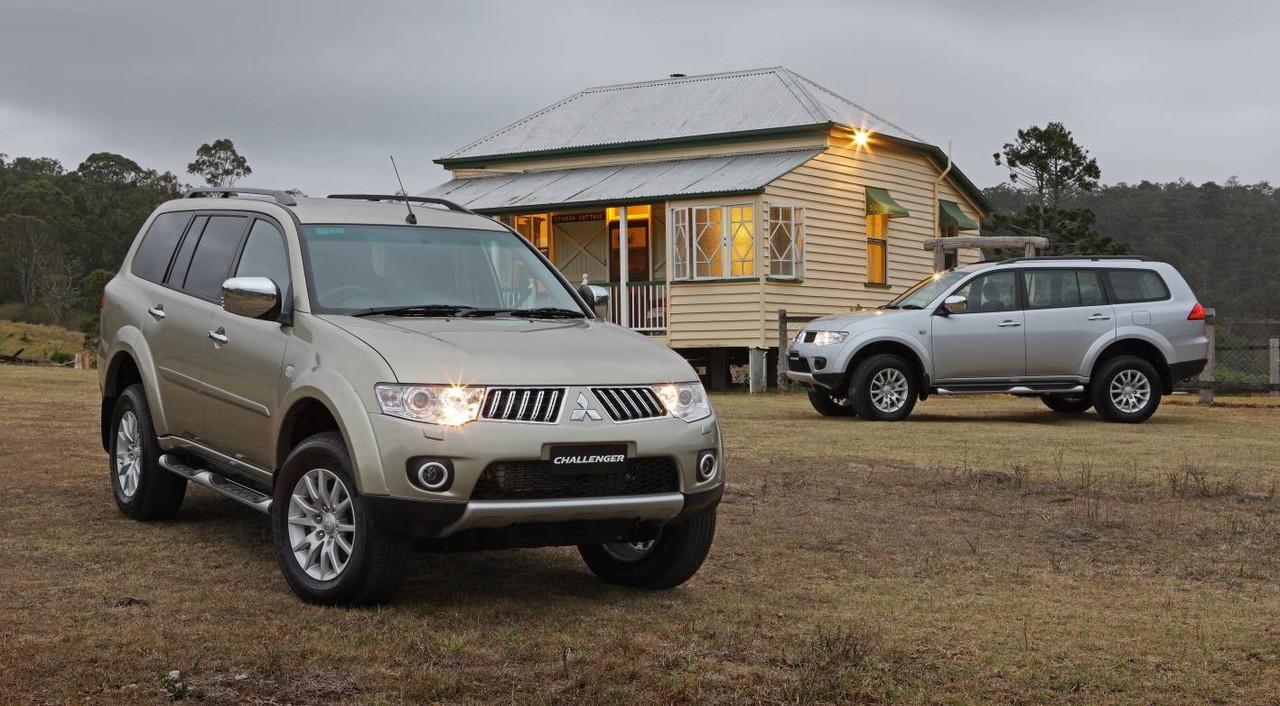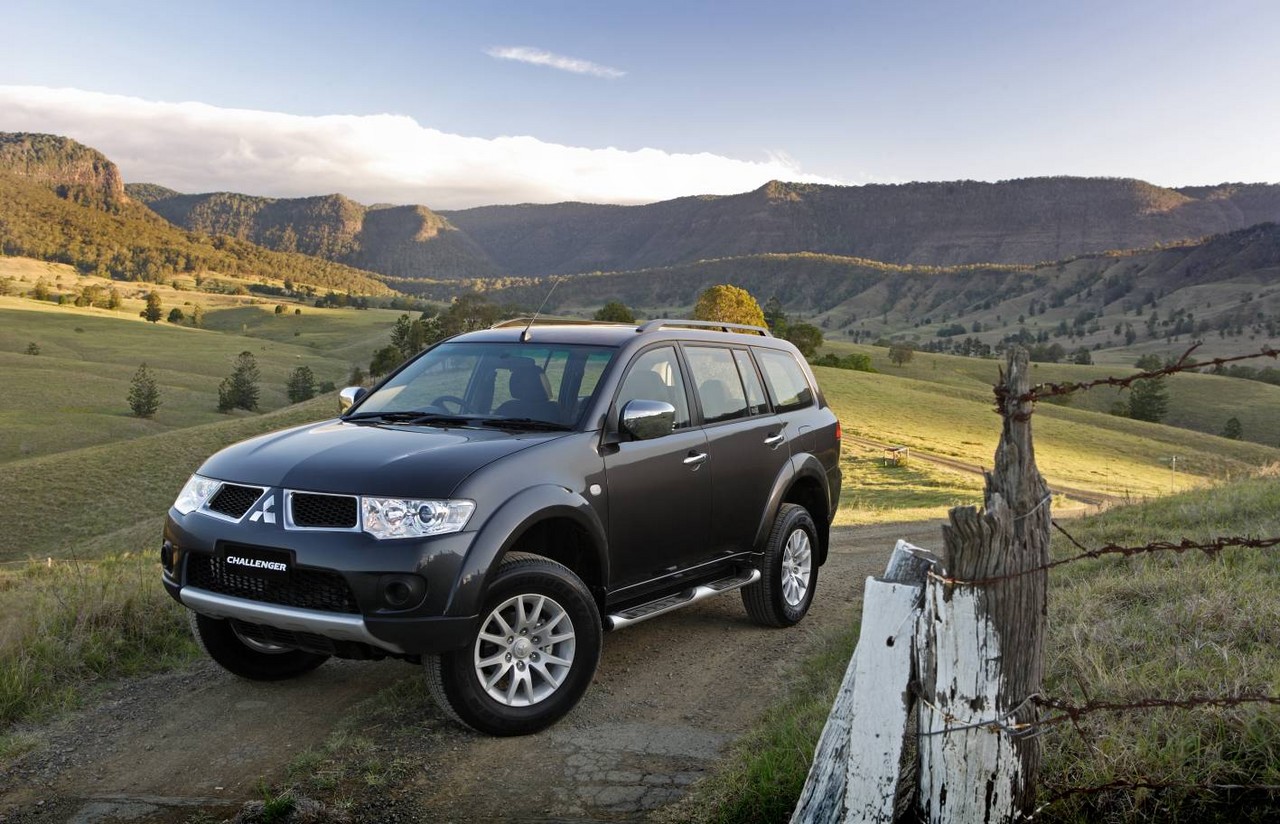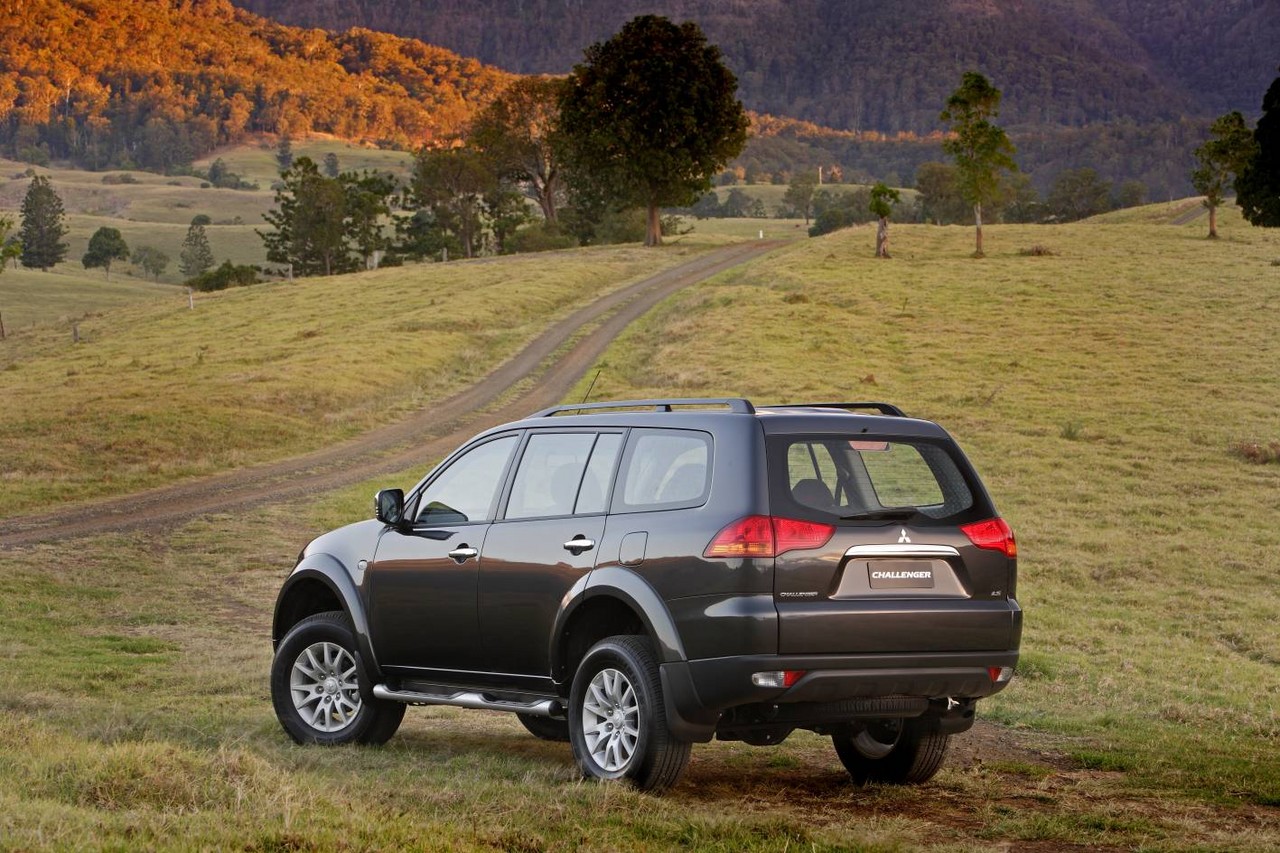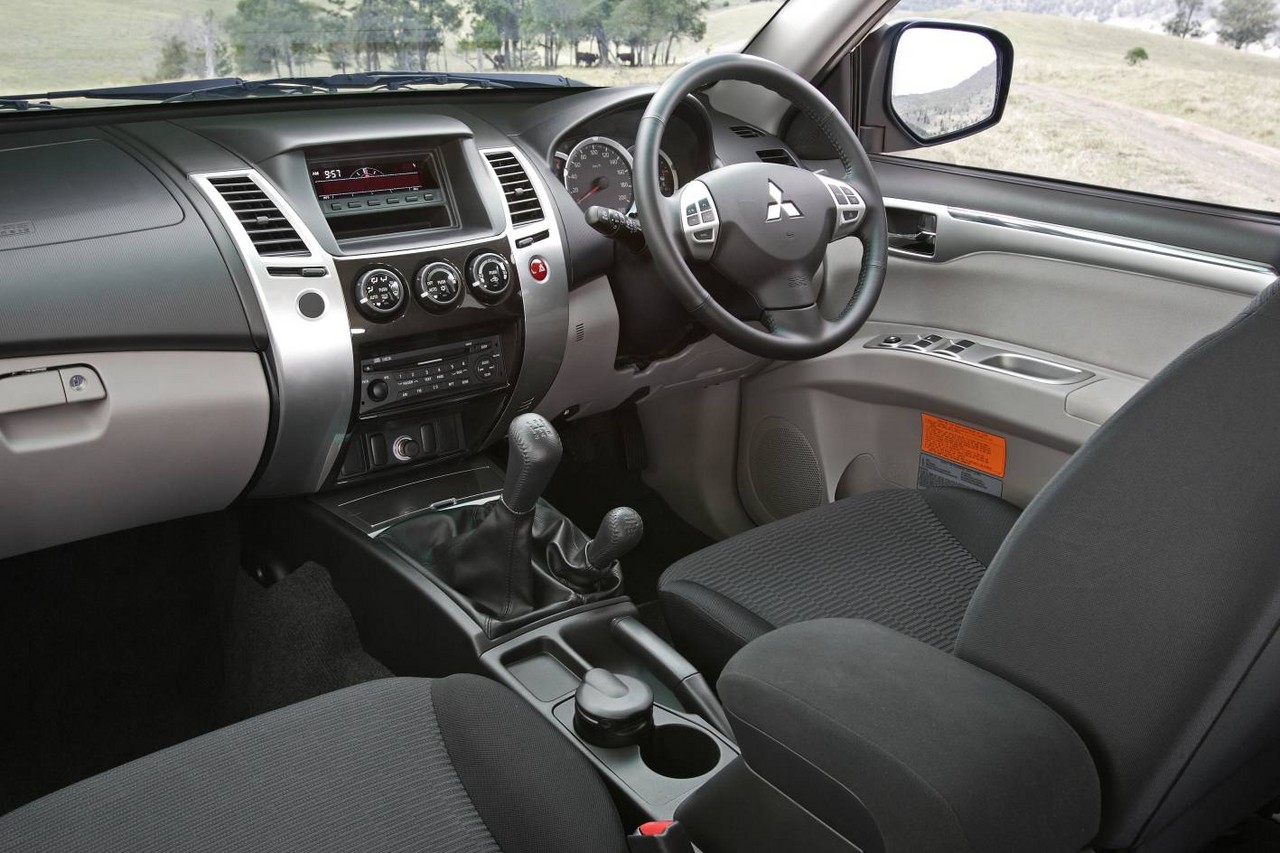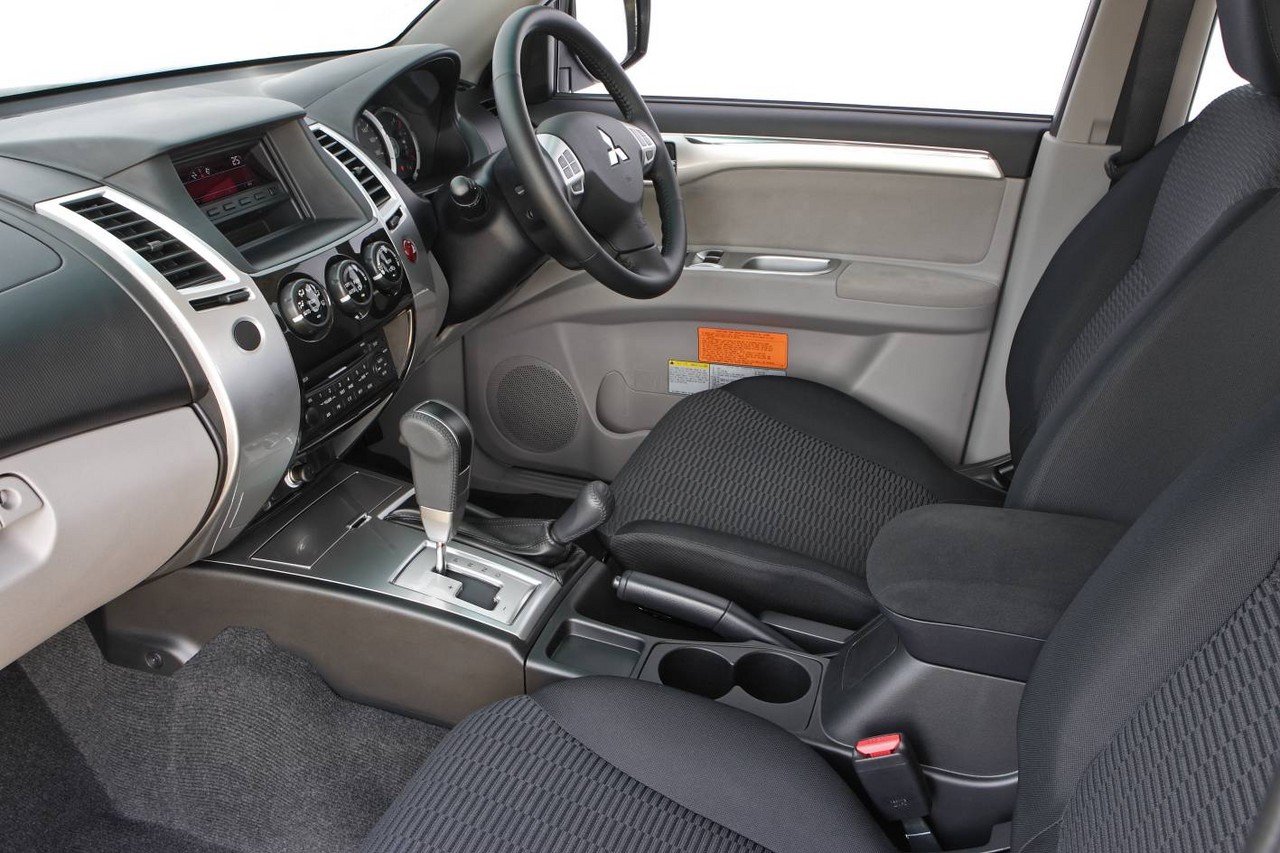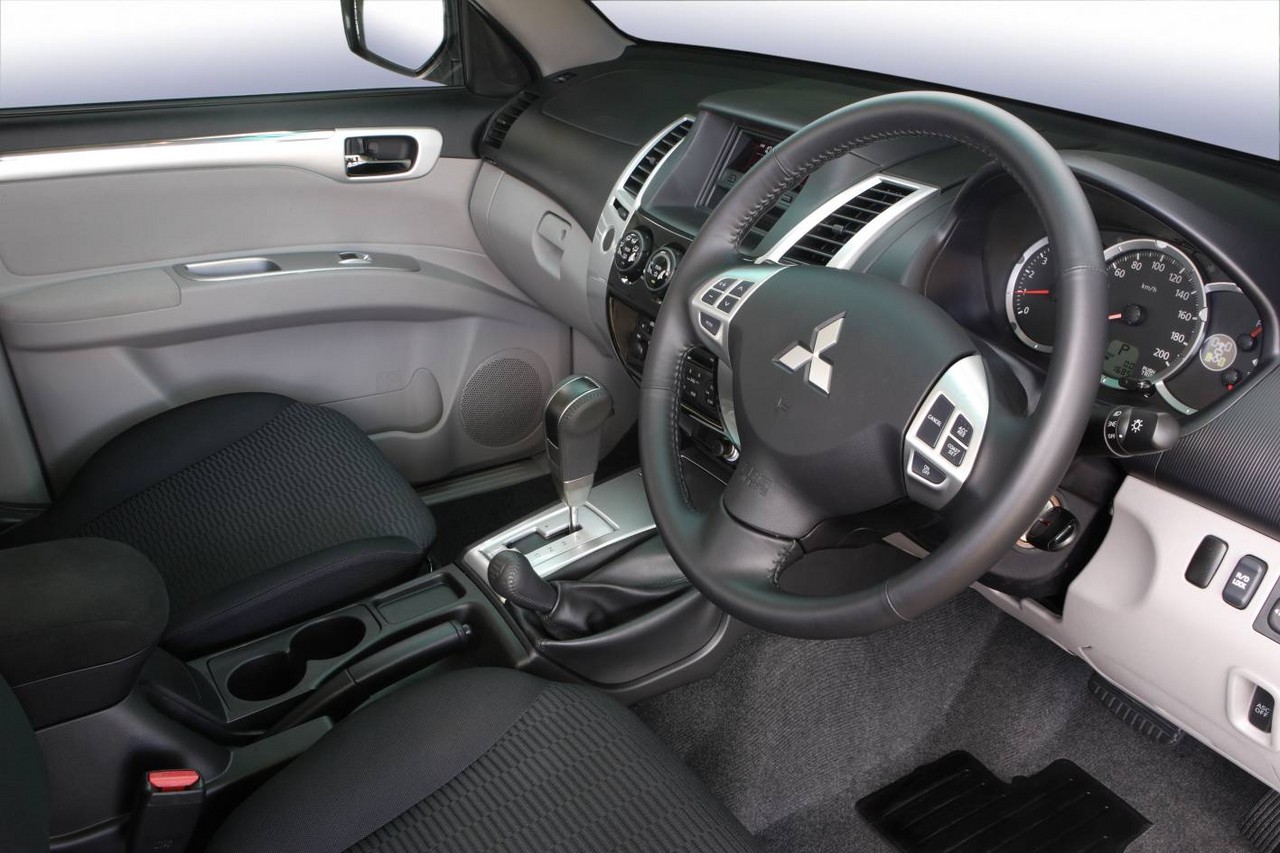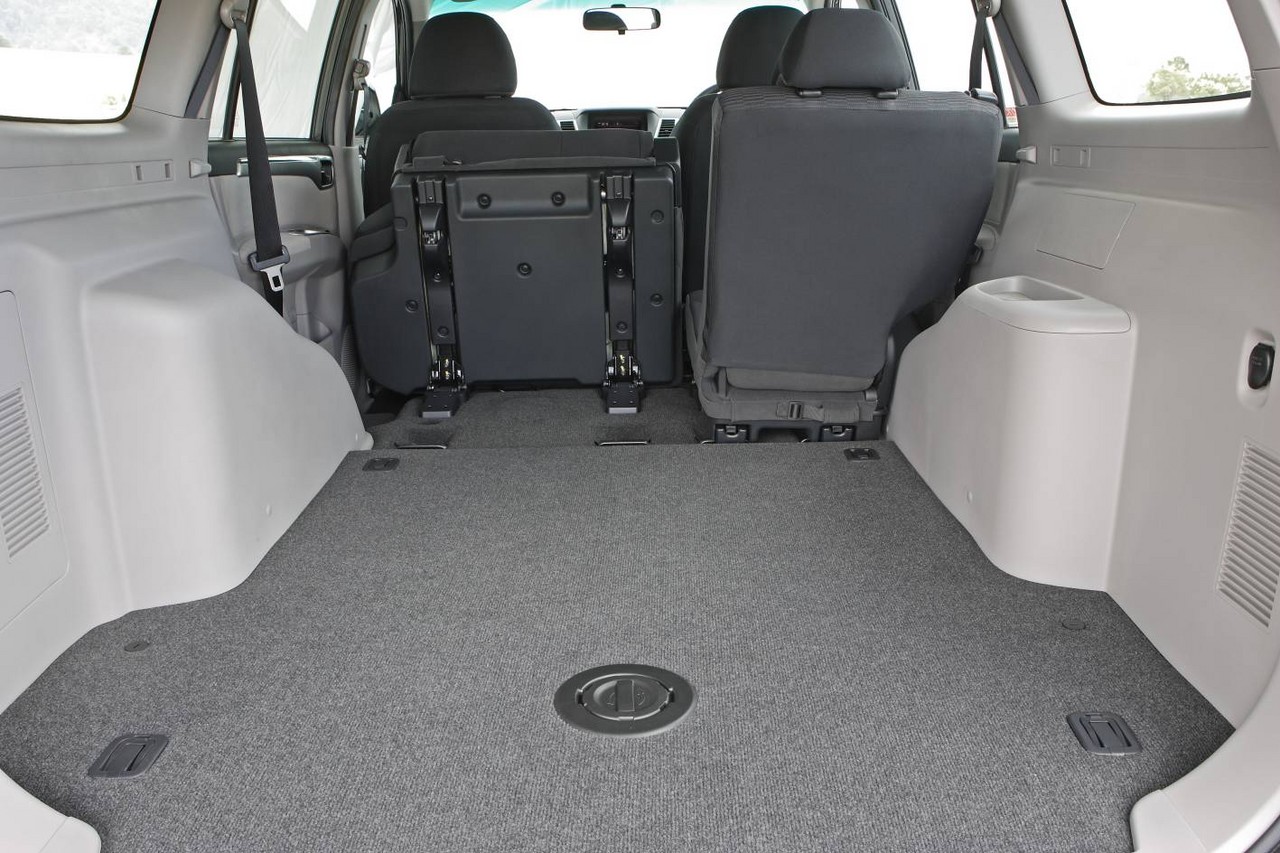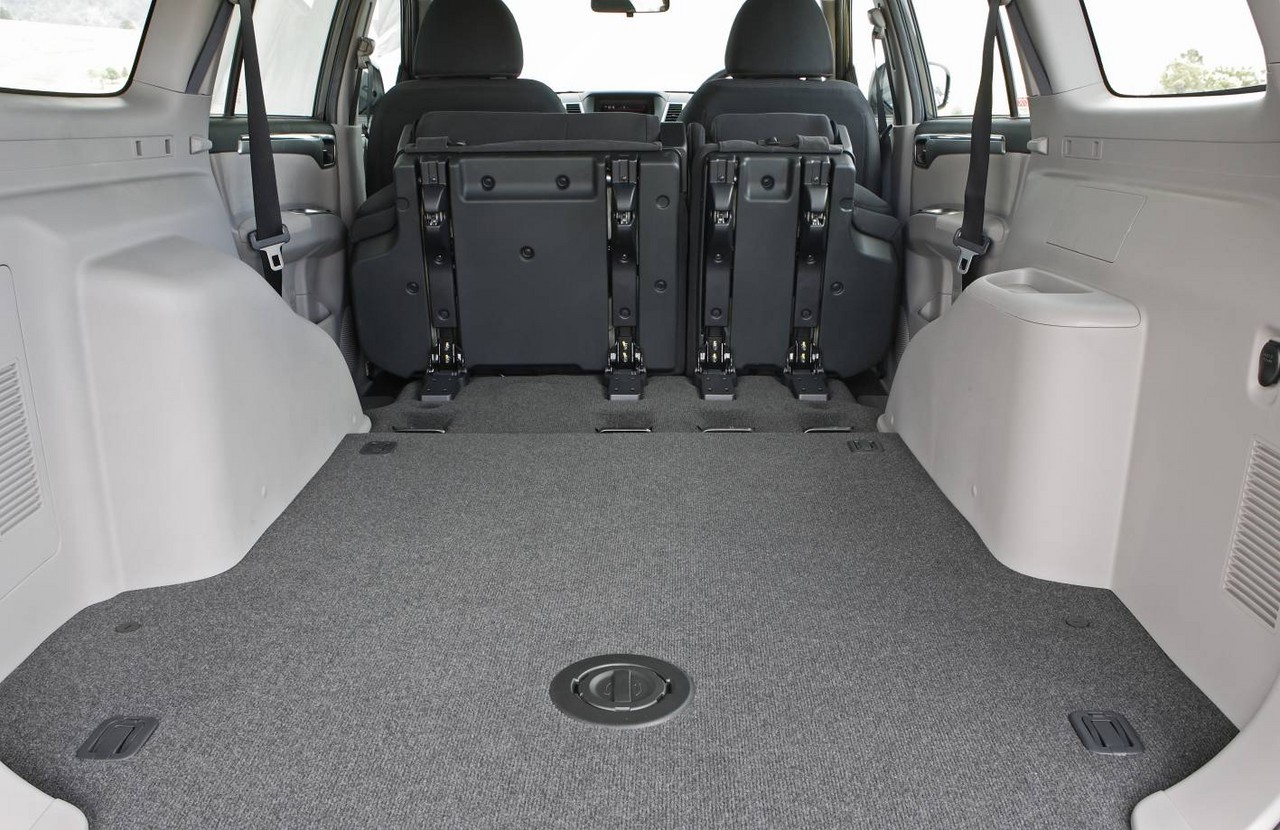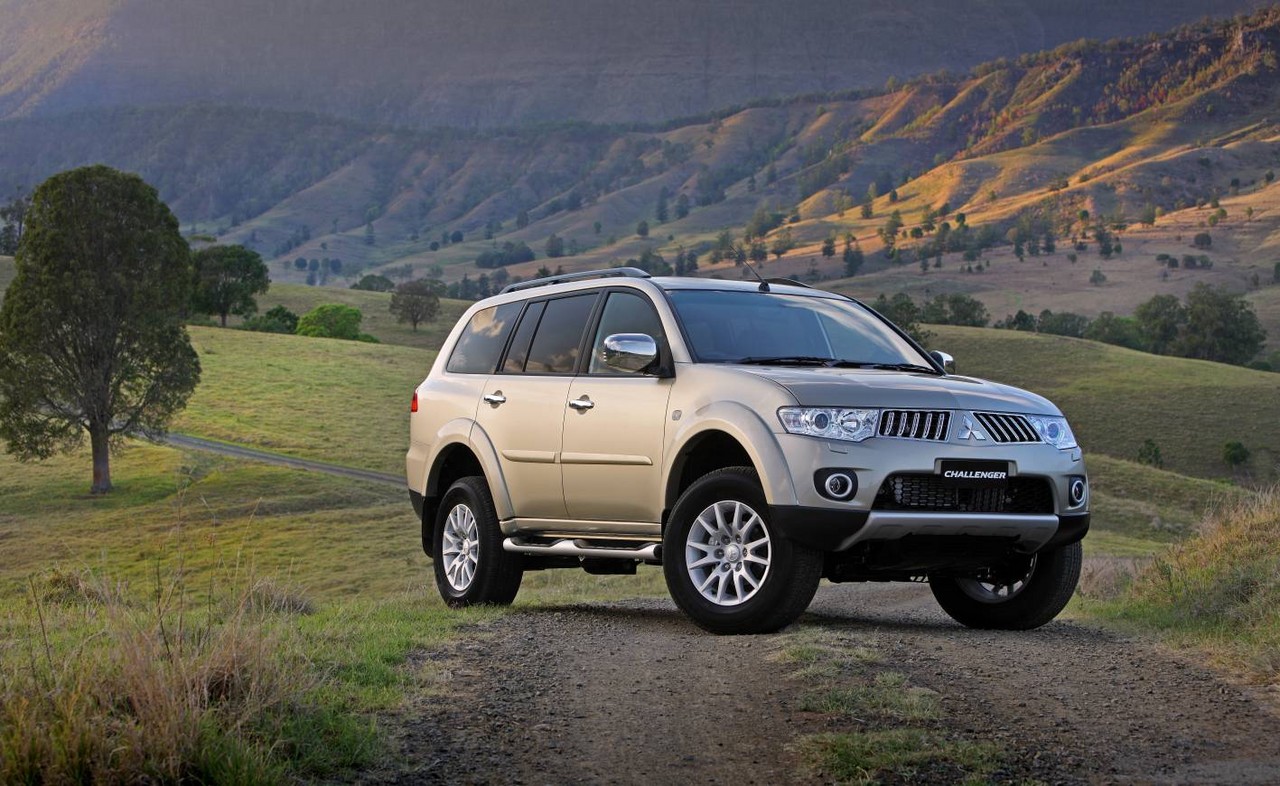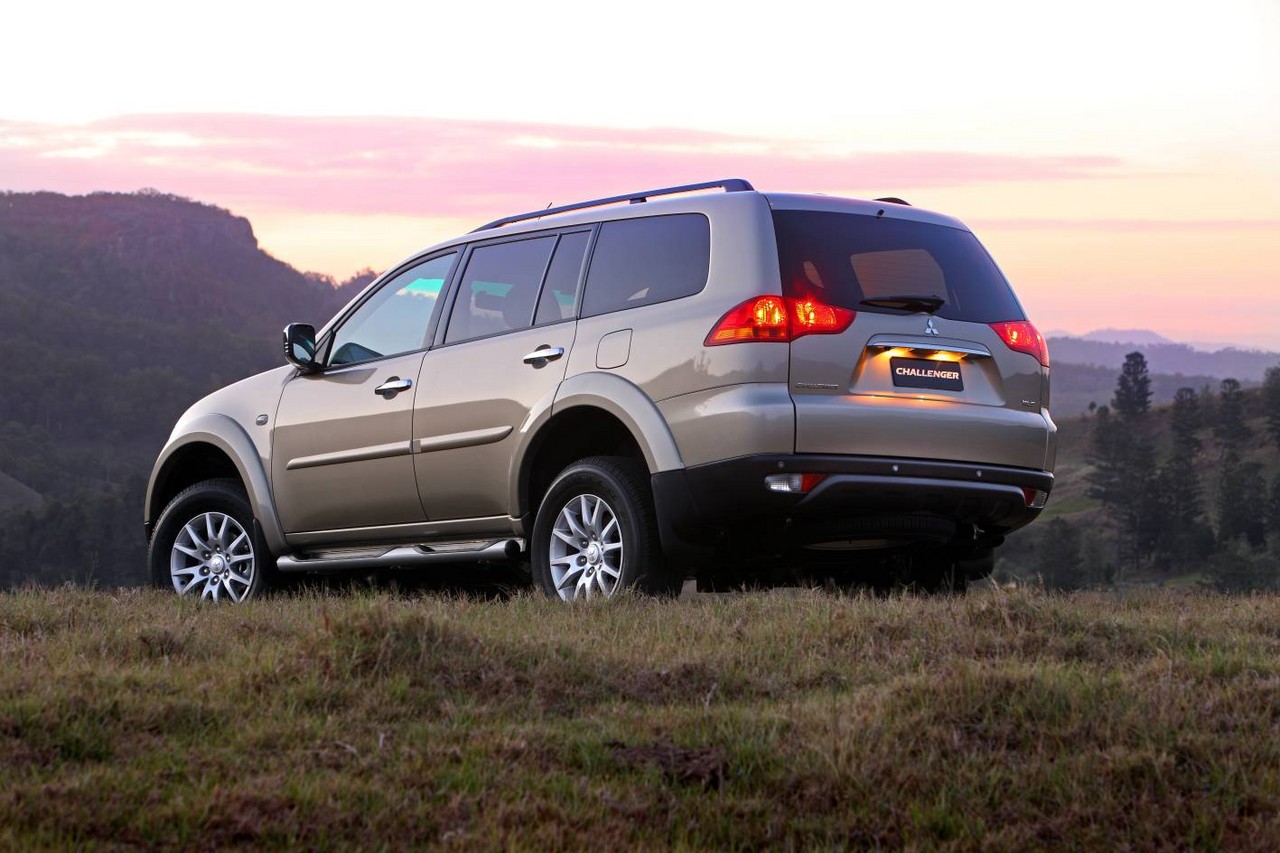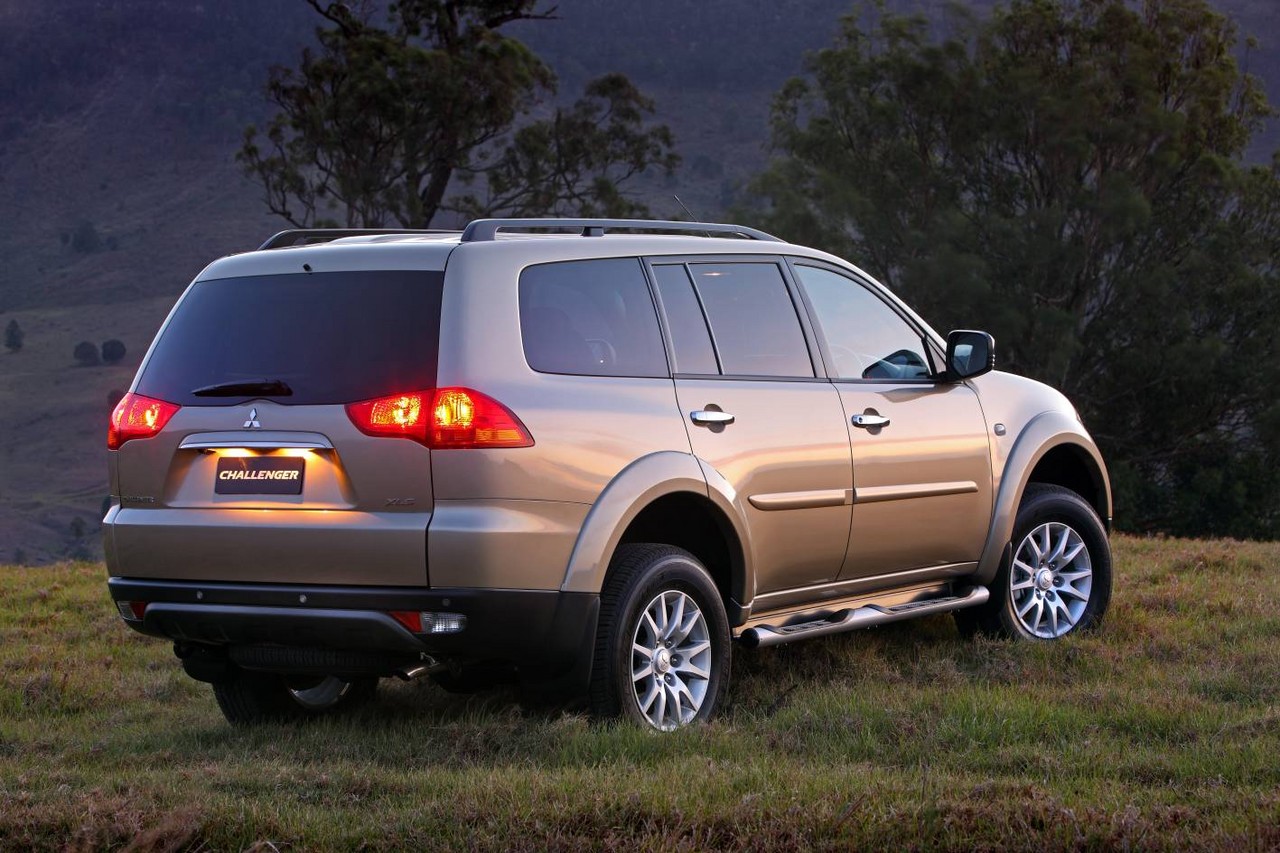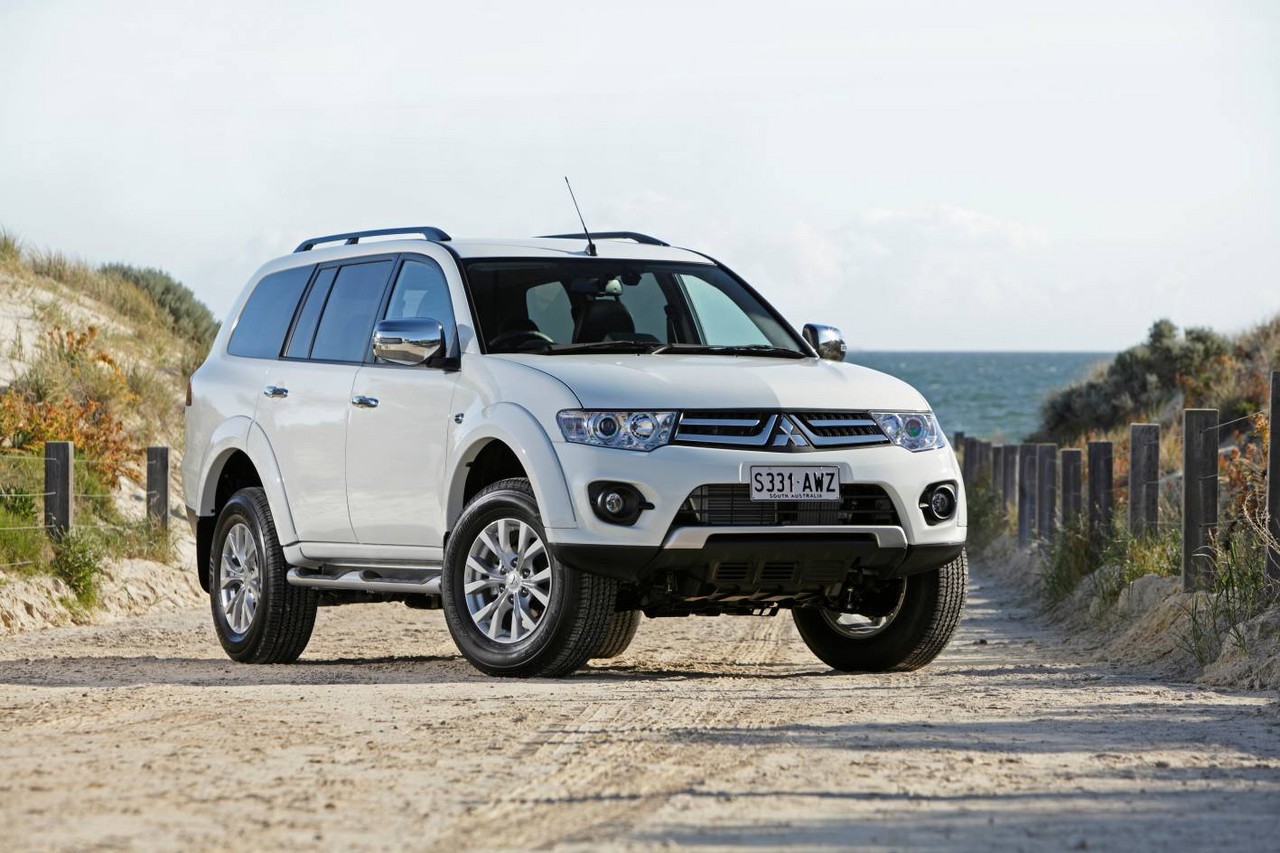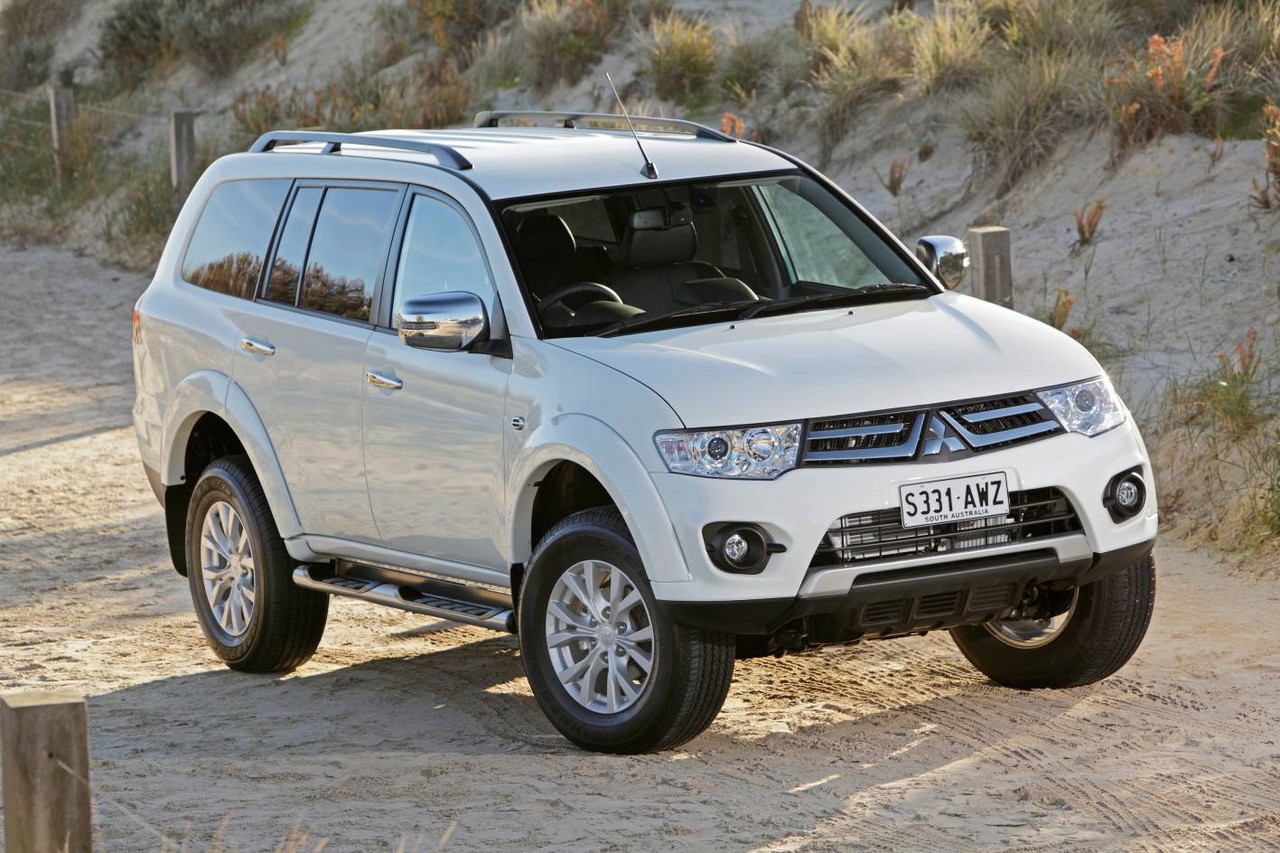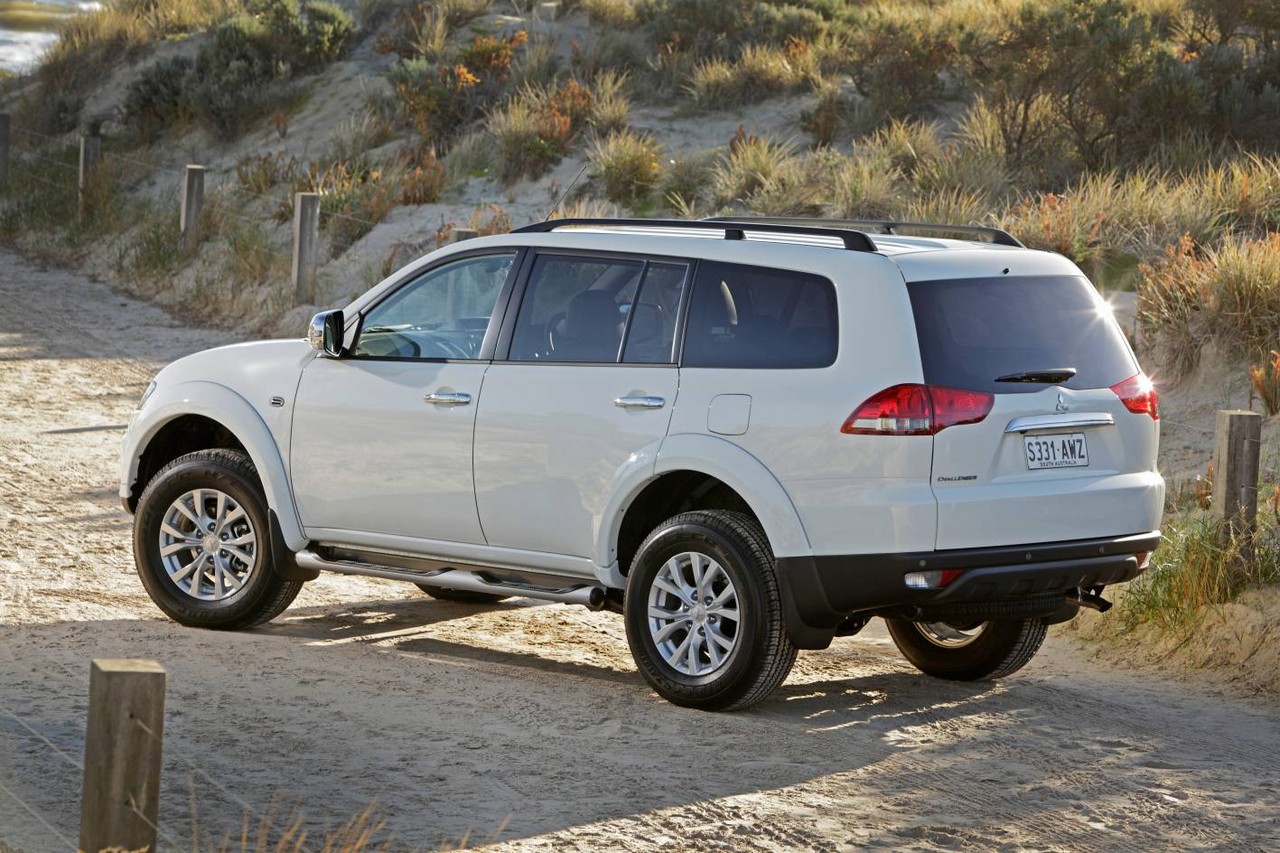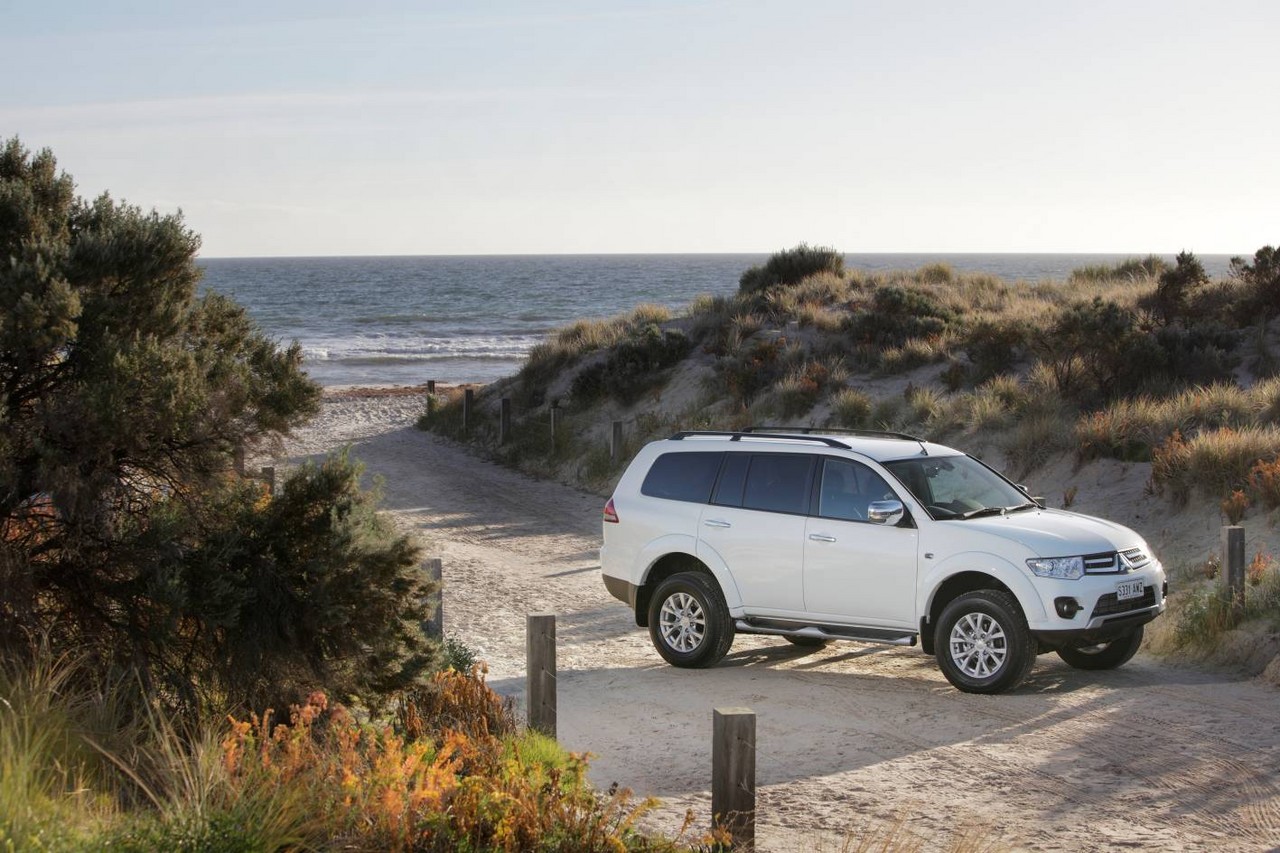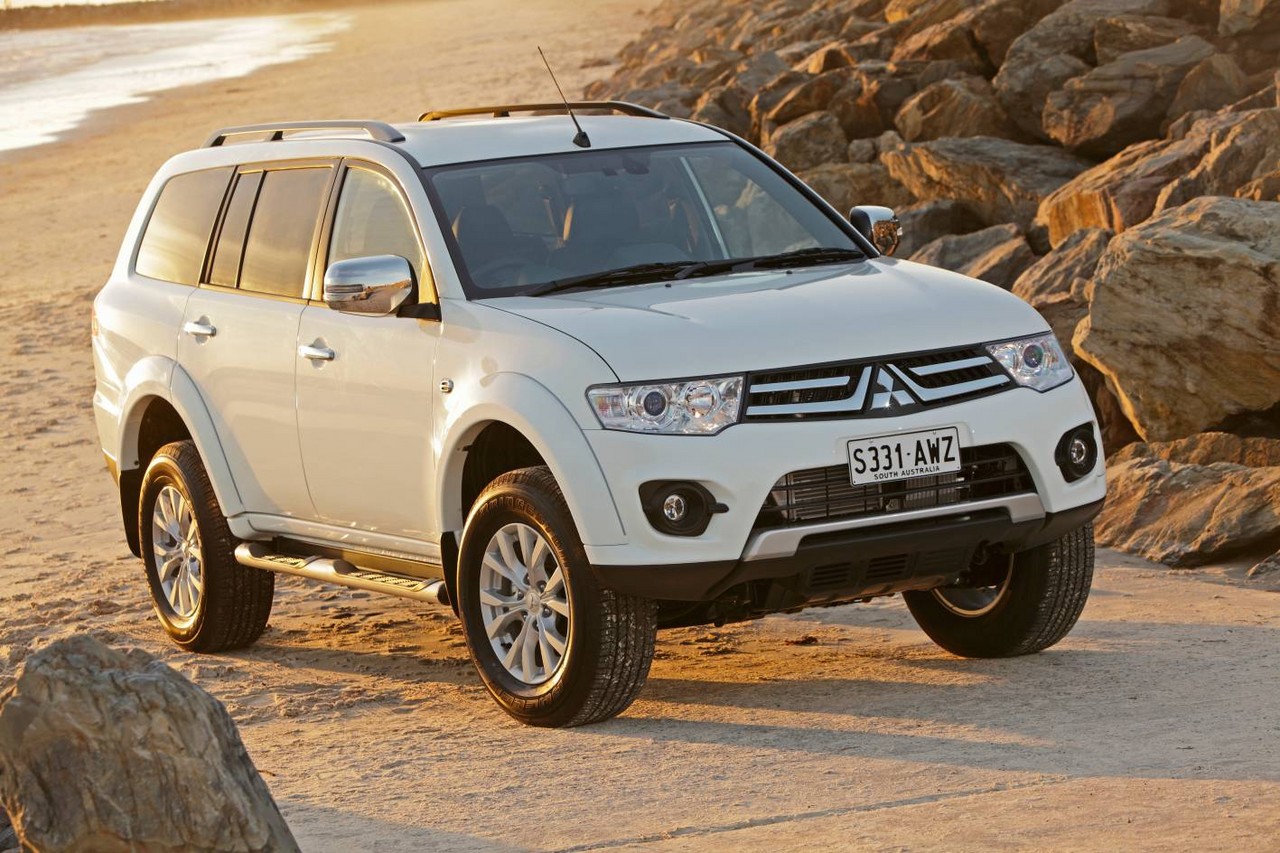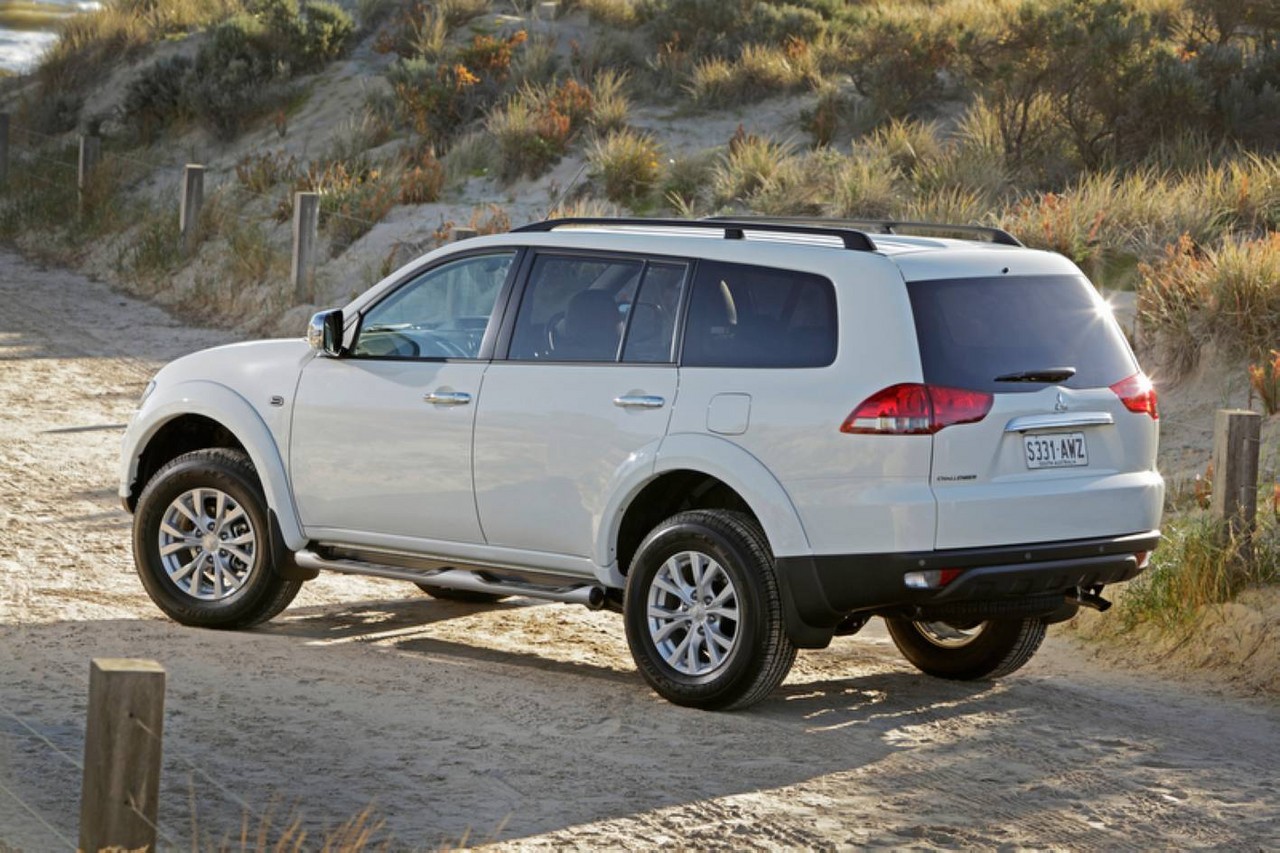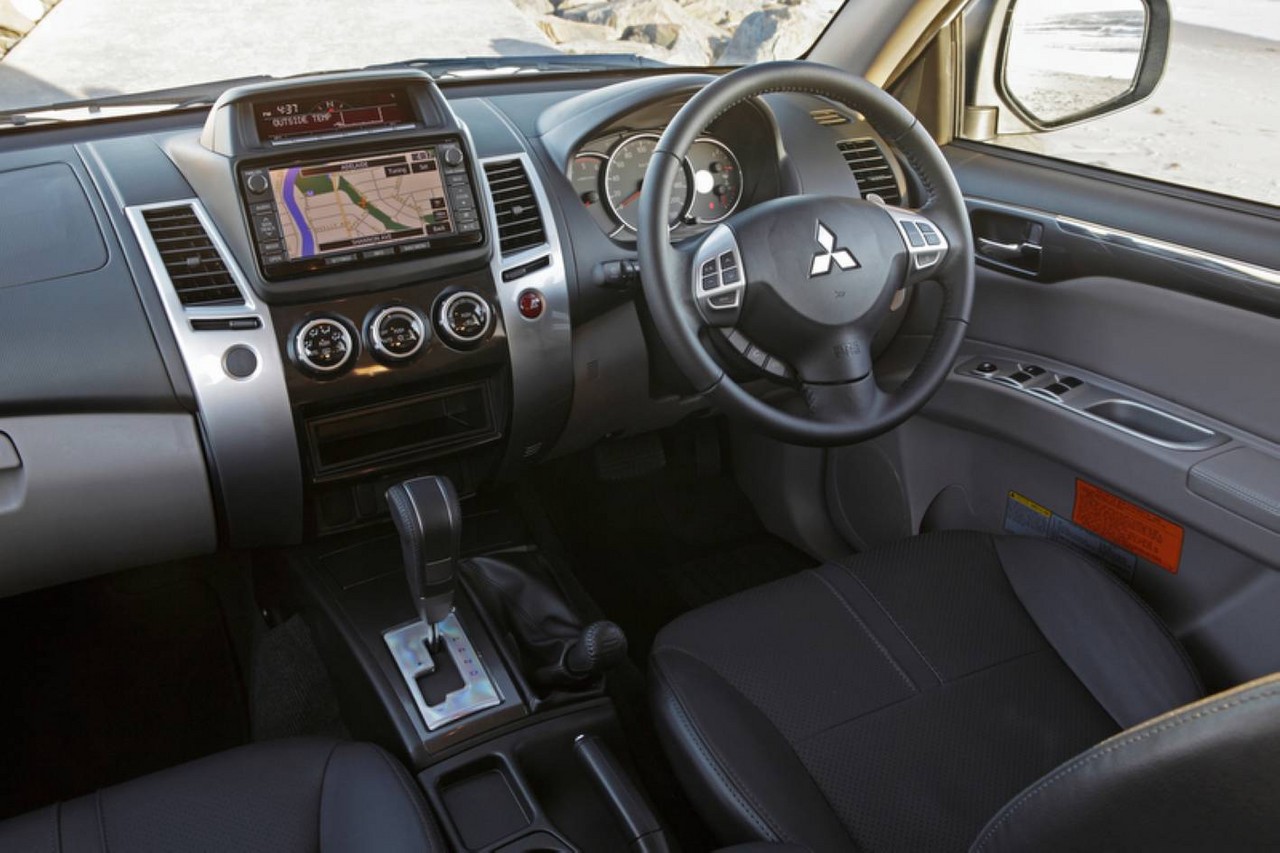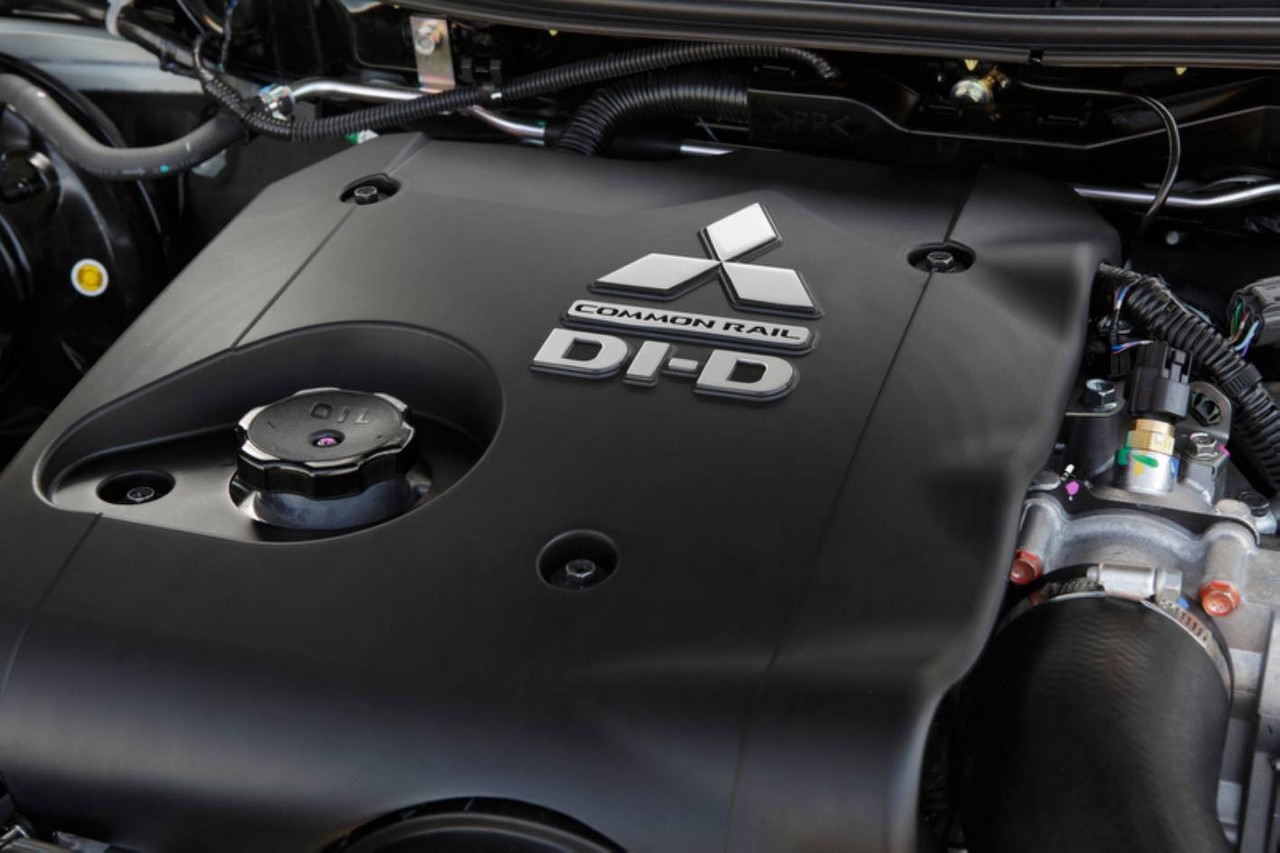
- 2.5-litre turbo-diesel has a surfeit of torque
- Spacious interior
- Off-road capability
- 2.5-litre turbo-diesel engine lacks refinement
- Firm rear seats uncomfortable over longer drives
- Poor dynamics reflect commercial origins
- Steering lacks precision
- Cheap interior plastics
Review: Mitsubishi PB Challenger (2009-13)
Overview
Released in December 2009, the Mitsubishi PB Challenger was a four-wheel drive wagon. Manufactured in Laem Chabang, Thailand, the Challenger was powered by a 2.5-litre common-rail, intercooled turbo-diesel engine (Mitubishi’s 4D45HP). The PB Challenger range initially consisted of LS and XLS variants.
In June 2010, the PB Challenger’s standard features were revised and, in March 2011, the range was expanded with the introduction of an unnamed, entry-level variant. From October 2011, this entry-level variant was available as a rear-wheel drive vehicle.
Based on the MN Triton utility , the Challenger had a ladder-frame chassis that was reinforced with high-strength steel. Furthermore, the PB Challenger was fitted with double wishbone front suspension and three-link rear suspension (both with coil springs, hydraulic shock absorbers and anti-roll bars). Compared to the PA Challenger , the PB Challenger was 165 mm longer (at 4695 mm), 40 mm wider (1815 mm), 110 mm taller (1840 mm) and had a 75 mm long wheelbase (2800 mm).
October 2012: Challenger update
In October 2012, the PB Challenger was updated and all vehicles had additional sound insulation for greater refinement. Standard safety equipment and features were also extended (detailed below).
| Variant | Seats | Drive | Year | Engine | Trans. | Peak power | Peak torque |
|---|---|---|---|---|---|---|---|
| N/A | 5 | RWD | 2011-13 | 2.5-litre turbo-diesel I4 |
5sp man, 5sp auto |
131 kW at 4000 rpm | 400 Nm at 2000 rpm (man.)/ 350 Nm at 1800 rpm (auto) |
| 4WD | 2011-13 | ||||||
| LS | 5 | 4WD | 2009-13 | ||||
| 7 | 4WD | 2009-13 | 2.5-litre turbo-diesel I4 |
5sp auto | 131 kW at 4000 rpm | 350 Nm at 1800 rpm | |
| XLS | 5 or 7 | 4WD | 2009-13 |
4WD system
The Challenger was fitted with Mitsubishi’s Super Select 4WD system which included high- and low-range gear ratios, a centre differential with viscous coupling unit, a rear differential lock (except for the entry-level variant) and automatic free wheeling hubs. The Super Select system enabled the driver to select from the following modes –
- 2H: high-range two-wheel drive;
- 4H: high range full-time four wheel drive;
- 4HLC: high range gearing with a locked centre differential for fixed four-wheel drive; and,
- 4LLC: low range gearing with a locked centre differential for fixed four-wheel drive.
Safety equipment
Standard Challenger safety equipment included dual front airbags, ABS, electronic brake force distribution, brake assist, electronic stability control, traction control and front seatbelts with pretensioners and load limiters; the LS and XLS were further equipped with front side airbags and curtain airbags (for the front and second row occupants).
From October 2012, standard safety equipment was extended to include front side airbags and curtain airbags.
Features: Challenger, LS and XLS
Standard Challenger features included 16-inch alloy wheels, a four speaker sound system with CD player, MP3-compatiblity and auxiliary input, air conditioning, cruise control, remote central locking, 60/40 split and flat folding second row seats, power mirrors and windows, a tilt adjustable steering wheel, height adjustable driver’s seat, 12 volt power outlets, a trip computer and an immobiliser.
In October 2012, standard features were extended to include auxiliary inputs (USB/3.5 mm), Bluetooth 2.0 mobile phone connectivity and audio streaming, a leather-wrapped steering wheel with audio controls and roof rails. Four-wheel drive models were also fitted a reversing camera.
Compared to the standard Challenger, the Challenger LS was further equipped with 17-inch alloy wheels, a six speaker sound system, climate control air conditioning, a leather-wrapped gearshift and hand brake, multi-function steering wheel and side steps; from June 2010, the LS was also fitted with Bluetooth connectivity. Where fitted, the third row of seats had a 50/50 split and folding operation. From October 2011, the LS was further equipped with a reversing camera and auxiliary USB input (the latter also extended to the XLS).
Initially, the Challenger XLS was differentiated by its 420 watt sound system with eight speakers, Mitsubishi Multi Communication System (MMCS) with satellite navigation, reversing camera and video jack, leather-faced seats, power adjustable driver’s seat, Bluetooth connectivity, front fog lamps, rear parking sensors, privacy glass and – for five-seat models – a rear cargo blind and net. In June 2010, however, the XLS’s features were revised – MMCS was made optional while a power adjustable front passenger seat, high intensity discharge (HID) headlights with washers, automatic headlights and rain-sensing wipers were fitted as standard.
Challenger Enhancement Pack
From October 2012, the Challenge was available with an optional Enhancement Pack which included 17-inch alloy wheels, a six speaker sound system, climate control air conditioning, front fog lights, a reversing camera, automatic headlights, rain-sensing wipers, a leather-wrapped park brake and gearshifter, power folding door mirrors and rear privacy glass. Exterior elements for the Enhancement Pack included a rear spoiler, body-coloured door mirrors and a unique radiator grille.
Related links
- Brochure: Mitsubishi PB Challenger (July 2010)
- Specifications: Mitsubishi PB Challenger (October 2010)
- Mitsubishi News: Mitsubishi’s Challenger 2WD Heads 2012 Model Year Line-Up (October 2011)
- Mitsubishi News: Mitsubishi’s 30th Anniversary Edition Challenger (October 2011)
Review: Mitsubishi PC Challenger (2013-15)
Overview
Released in July 2013, the PC Challenger introduced a simplified range as the rear-wheel drive and seven-seat models were discontinued.
Visually, the PC Challenger could be identified by its revised grille, front bumper and tail-lights. Inside, there were new black seat fabrics, a new centre stack and audio system, a 6.1-inch colour touchscreen and ‘carbon look’ trim accents.
| Seats | Engine | Drive | Trans. | Peak power | Peak torque | |
|---|---|---|---|---|---|---|
| Challenger | 5 | 2.5-litre turbo-diesel I4 | 4WD | 5sp man. | 131 kW at 4000 rpm | 400 Nm at 2000 rpm |
| 5sp auto | 131 kW at 4000 rpm | 350 Nm at 1800 rpm | ||||
| Challenger LS | 5 | 2.5-litre turbo-diesel I4 | 4WD | 5sp auto | 131 kW at 4000 rpm | 350 Nm at 1800 rpm |
Features
Compared to their PB predecessors, standard features for the PC Challenger were extended to include a reversing camera and rear parking sensors. The LS variants gained power adjustable front seats, leather seat facings, front fog lights, automatic headlights, rain-sensing wipers, privacy glass and a cargo blind.
As an extra cost option, the LS variant was available with the Mitsubishi Multi Communication System (MMCS) which included satellite navigation and a seven-inch colour touchscreen.
Brochure
Related links
- Mitsubishi News: Mitsubishi 14MY Challenger (July 2013)
- Mitsubishi Australia: Mitsubishi Challenger
- Wikipedia.org: Mitsubishi Mk.2 Challenger
